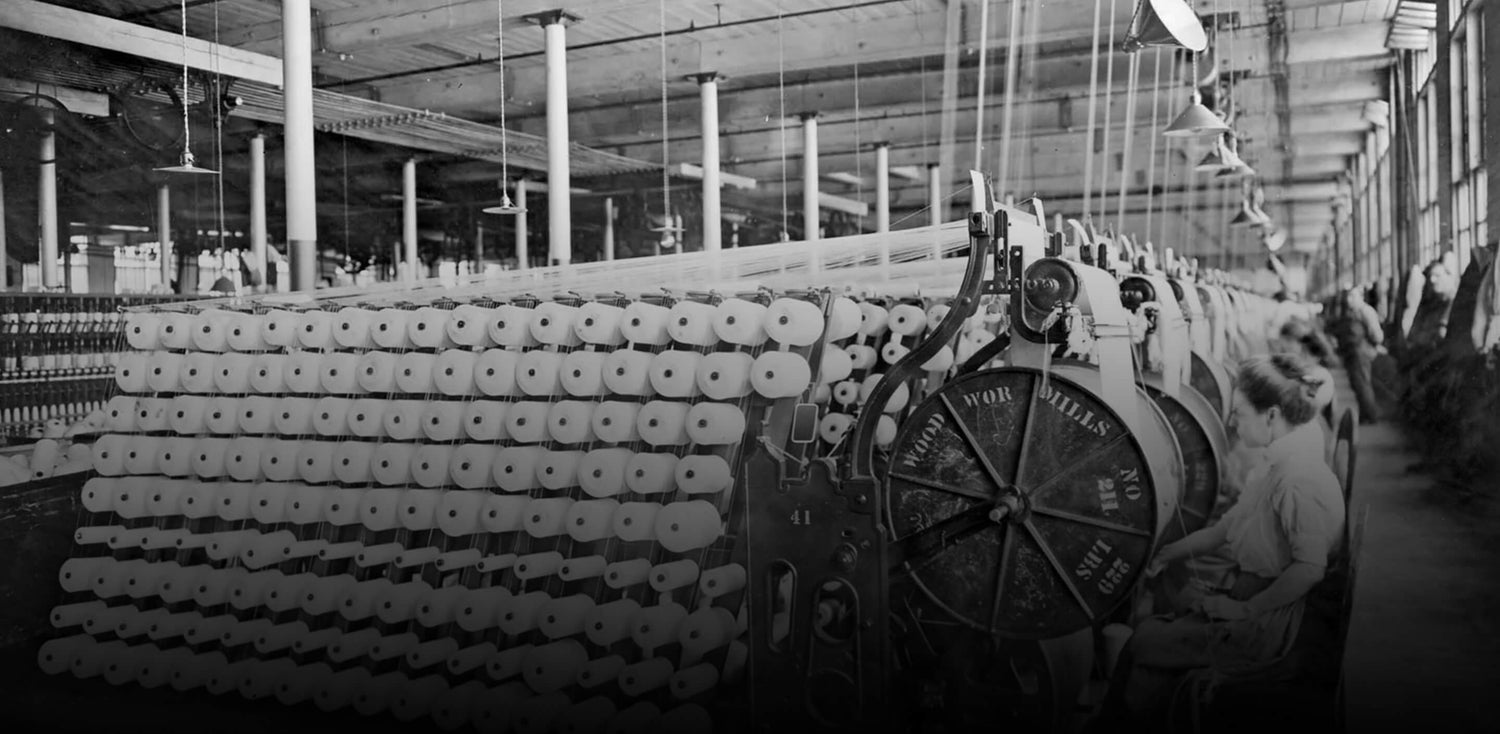The industrial revolution started somewhere around the 1760s and continued till 1840. Mainly the revolution revolved around textile manufacturing, iron founding, steam power, oil drilling, the discovery of electricity, industrial applications, telegraph, and many others. A benefit that people got after this revolution was that there was a massive increment in workers' productivity and the standard of living too increased. Due to the reduction of time spent on traveling, transportation, and communication.
A Look At The Industrial Progressiveness

In the eighteenth century manufacturing of cloth was done with the help of individual workers. Moreover, the British government issued two Calico Acts to protect the domestic wool industry, by increasing the amounts of cotton fabric imported from India.
The industrial revolution bought a change and the flying shuttle was invented by John Kay which enabled wider cloth to be woven faster. But still, after this, an advancement in spinning was also needed. So James Hargreaves invented the spinning jenny, which was a device that did a work of several many wheels together. Later on, Richard Arkwright invented the water frame, but soon it was supplanted by the spinning mule which was invented by Samuel Crompton.
Somewhere around the early eighteenth-century steam engines were invented, that became power suppliers. Moreover, waterfalls and horsepower were left behind. The first steam engine was invented by Thomas Newcomen that was used for pumping water out of mines. Furthermore, a much more powerful steam engine was invented by James Watt, which had a reciprocating engine that was capable of powering machinery. During the end of the eighteenth century, the first steam-driven textile mills began to appear.
Textile Machinery And Their Inventors
Although, there have been several inventions in textile machinery. Still, some of the people who were the building blocks of the machinery are as follows:
In 1733 Flying shuttle was invented by John Kay which helped in the improvement of looms that enables weavers to weave fast.
1742 was the time in which the first cotton mills were opened in large amounts.
In 1764 James Hargreaves invented the Spinning Jenny, which was used to improve the process of spinning wheels. Moreover, the spinning jenny had its patent in the year 1770. Also during this time the first powered textile machine, Water Frame was invented by Richard Arkwright. Later in 1769, Richard had a patent on water frame.
In 1779 Spinning mule was invented by Crompton which allowed greater control over the weaving process.
Further, in 1785 Cartwright had its patent on the power loom which was later improved by William Horrocks. He is also known for the intention of the variable speed batton in 1813.

1787 was the year when cotton goods production increased by tenfold since 1770. In 1789 textile machinery design was bought to the US by Samuel Slater.
In 1792, the cotton gin was invented by Eli Whitney, it was a machine that automated the separation of cotton seeds from short-staple cotton fiber.

1804 was a great year for Joseph Marie Jacquard as he invented the Jacquard loom which helped in weaving complex designs. Moreover, it automatically controlled the warp and weft threads on a silk loom by recording patterns of holes in a string card.
In 1813, the variable speed batton was invented by William Horrocks which improved the power looms. And in 1856, the first synthetic dye was invented by William Perkin.
Forefront Global Leader

From around 1815 to 1870 Britain gained the benefit of world’s first modern industrialized nation, as finished goods were produced efficiently and at a very reasonable price. Moreover, the prices were so low that they could be sold to local manufacturers in any market. In addition, Britain had the power to dominate its economy through its free trade, as apart from coal and iron, most of the raw materials were imported. Due to this, there was an increment in its shares, in1990 it was 22.8% of total imports. And in 1992 global share increased by 14.9% and in total it was 28.8% of manufactured export.
FAQ
What were the effects of the Industrial Revolution on the British textile industry?
British textile industry gave a boost to the Industrial revolution by provoking advancement in technology, stimulating the coal and iron industries, boosting raw material imports, and improving transportation. All these things made the manufacturing process easy.
What was the textile industry's role during the Industrial revolution?
A major role was played by the textile manufacturers as there was an increment in the production and cloth. As from handloom people started switching to factories and machines, which allowed more time and other things could be touched. These advancements helped in increasing the output rapidly.
Why is it so that the textile industry is the first to experience the Industrial revolution?
Apart from other things, the textile industry plays a major role in the Industrial Revolution. Because employment in this sector was available in a large amount. Moreover, the value of output and capital invested was also very high. Also, it was the first industry to use modern production methods.
We also happen to be a magnet for suggestions, and would love to catch yours….throw us yours on hello@fabriclore.com





